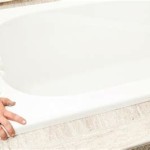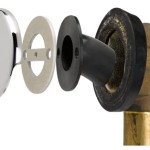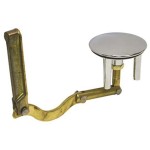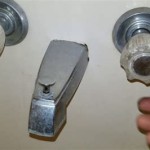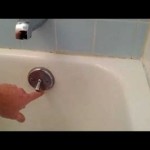Does a Bathtub Drain Need to Be Vented? An In-Depth Look
The question of whether a bathtub drain requires venting is a common one among homeowners and even some plumbing professionals. Correct drain venting is fundamental to a properly functioning plumbing system. Without adequate venting, a variety of issues can arise, impacting the efficiency and hygiene of the drainage system. This article explores the principles of plumbing ventilation, the specific needs of a bathtub drain, and the potential consequences of inadequate venting.
Plumbing systems rely on a network of pipes designed to transport wastewater away from fixtures and into the sewer system or septic tank. This network isn't simply a straight path; it incorporates vents that connect to the outside air. These vents serve a crucial purpose: they equalize air pressure within the drainpipe. Without ventilation, the flow of water through a drain can create a vacuum, which can siphon water from the trap, leading to sewer gases entering the home. These gases are not only unpleasant but can also pose health risks.
A bathtub drain is notably susceptible to the effects of inadequate venting due to the large volume of water it can discharge relatively quickly. The design of a bathtub, with its wider drain opening compared to a sink, can exacerbate the negative pressure created during drainage. Therefore, understanding the necessity and methods of venting a bathtub drain is crucial for maintaining a healthy and functioning plumbing system.
The Fundamentals of Plumbing Venting
Plumbing vents provide a pathway for air to enter and exit the drainpipes. The primary purpose of a vent is to maintain neutral air pressure within the plumbing system. When water flows down a drainpipe, it creates a pressure differential. As water rushes down, it can create a vacuum behind it. This vacuum can pull water from nearby traps, the curved section of pipe designed to hold water and prevent sewer gases from entering the building. Without a vent, this siphoning effect is more likely to occur.
The location of the vent is also critical. It should be positioned close enough to the fixture it serves to effectively equalize pressure. Generally, vents are required to be installed within a certain distance of the trap they protect. This distance is usually specified in local plumbing codes and varies depending on the diameter of the drainpipe. Longer distances between the trap and the vent make the vent less effective at preventing siphoning.
There are different types of venting systems, including individual vents, common vents, and circuit vents. An individual vent connects directly to the drainpipe of a single fixture and extends upward through the roof. A common vent serves multiple fixtures, typically located close together. A circuit vent is used in systems with multiple fixtures arranged in a row, such as a series of sinks in a commercial setting. The choice of venting system depends on the layout of the plumbing and local plumbing codes.
The Importance of Venting for Bathtub Drains
A bathtub drain, due to its potential for rapid and voluminous water discharge, is particularly vulnerable to the effects of negative pressure. When a large amount of water drains quickly from a bathtub, it can create a strong vacuum within the drainpipe. This vacuum can easily siphon water from the tub's P-trap, which is designed to prevent sewer gases from entering the bathroom. If the P-trap is emptied, the sewer gases can flow freely into the bathroom, creating an unpleasant and potentially hazardous environment.
Furthermore, inadequate venting can lead to slow drainage and gurgling noises from the drain. The vacuum created in the unvented drainpipe can impede the flow of water, causing it to drain slowly. As the water struggles to drain, air bubbles may be forced up through the trap, creating a gurgling sound. These symptoms are strong indicators of a venting problem.
The presence of sewer gases in the bathroom is a significant concern. These gases contain methane, hydrogen sulfide, and ammonia, among other potentially harmful compounds. Exposure to sewer gases can cause a range of health problems, including headaches, nausea, dizziness, and respiratory irritation. In high concentrations, sewer gases can even be flammable or explosive. Therefore, proper venting of a bathtub drain is essential for protecting the health and safety of the occupants of the building.
Consequences of Inadequate Bathtub Drain Venting
Ignoring the venting needs of a bathtub drain can lead to a cascade of problems. The most immediate consequence is often the permeation of sewer gases into the living space. The characteristic rotten egg smell of hydrogen sulfide is a telltale sign of sewer gas intrusion. This odor is not only unpleasant but also indicates a potential health hazard.
Beyond the immediate discomfort and potential health risks posed by sewer gases, inadequate venting can also contribute to longer-term plumbing problems. The siphoning of water from the P-trap can lead to corrosion and deterioration of the drainpipe. The constant exposure to sewer gases and moisture can accelerate the breakdown of the pipe material, leading to leaks and eventual failure.
Another potential consequence is the contamination of water sources. If the plumbing system is not properly vented, there is a risk of back-siphonage, where wastewater is drawn back into the potable water supply. This can occur if there is a drop in water pressure, such as during a water main break. The vacuum created in the unvented drainpipe can pull contaminated water back into the drinking water lines, posing a serious health risk. Plumbing codes are designed to prevent these kinds of cross-connections and ensure the safety of the water supply.
In addition to these functional and health-related consequences, inadequate venting can also result in property damage. Leaks caused by corroded drainpipes can lead to water damage to walls, floors, and ceilings. Mold growth can also occur in damp environments, further exacerbating the damage and posing additional health risks. Addressing these problems can be costly and time-consuming, highlighting the importance of proper venting from the outset.
Ultimately, ensuring that a bathtub drain is properly vented is not just a matter of code compliance; it is a fundamental aspect of maintaining a healthy, safe, and efficient plumbing system. The potential consequences of inadequate venting range from unpleasant odors to serious health risks and costly property damage. Therefore, it is crucial to consult with a qualified plumber to ensure that the venting system is properly designed and installed, protecting the occupants of the building and preserving the integrity of the plumbing system.

Home Fix Gurgling Sound Erupts From Bathtub Drain

Vent Options For Plumbing Drains Fine Homebuilding

Plumbing Vents The Ultimate Guide Hammerpedia

Can A Sink Drain Into Shower Venting Pipe Home Improvement Stack Exchange

Freestanding Tub Plumbing

Plumbing Vents The Ultimate Guide Hammerpedia

Bathtub Vent Fine Homebuilding

Plumbing Will My Vent Siphon The Bathtub P Trap Home Improvement Stack Exchange

Vent Options For Plumbing Drains Fine Homebuilding

Wet Vents Take Full Advantage Of The Minimum Standards Set Forth In Plumbing Code Books Mechanical
Related Posts

